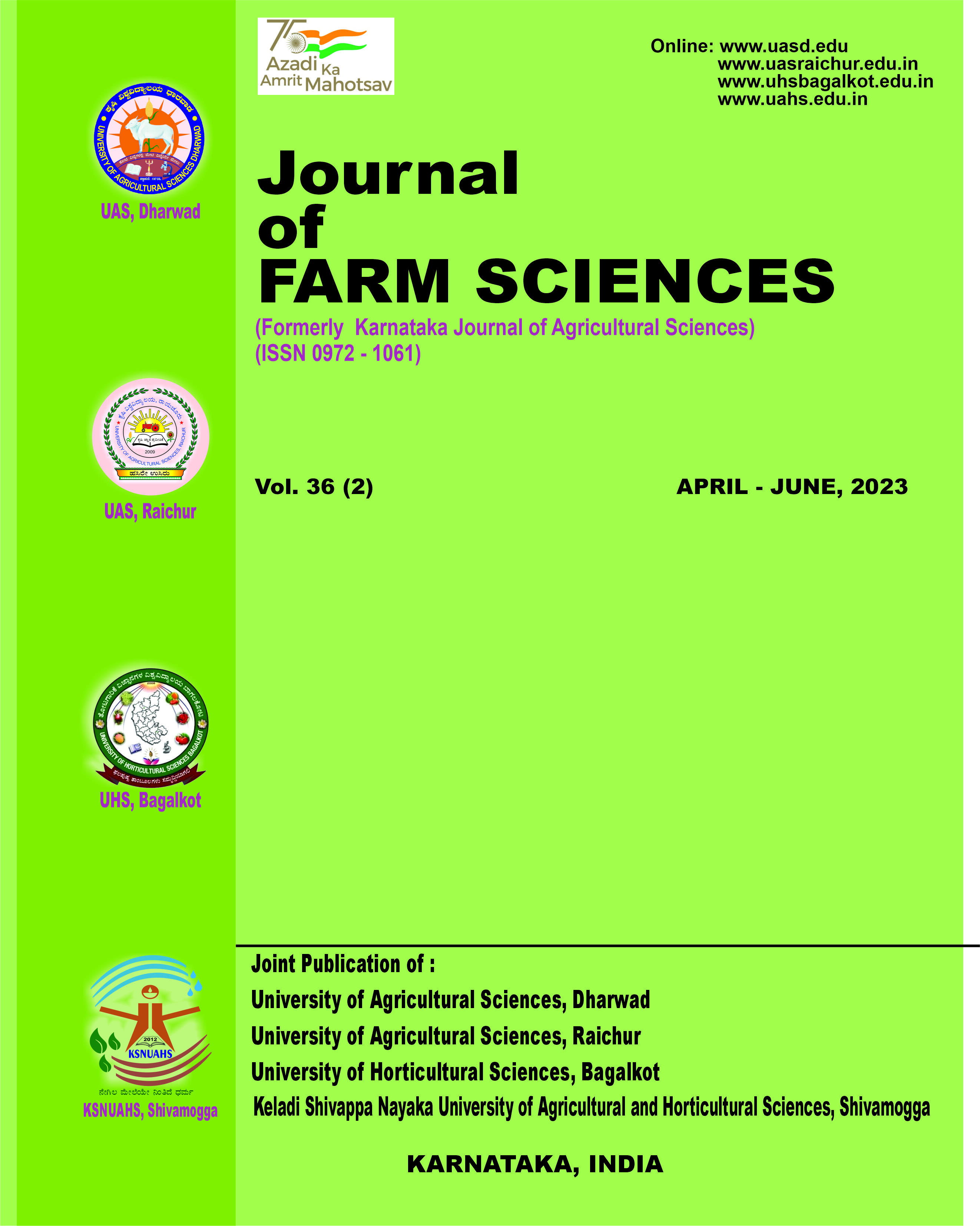Trends and status of horticultural crops in Karnataka
Abstract
The study analyse growth rates, instability and decomposition of horticultural crops in Karnataka, it offers valuable insights into dynamics of agricultural sector. The Secondary data on area under cultivation, production and productivity were utilised. Compound Annual Growth Rates (CAGR) and Cuddy Della Valle Instability Index (CDVI) were calculated to assess growth patterns and their instability. Fruits and vegetable cultivation showed significant growth over two decades, while spice crops had varying trends and plantation crops witnessed substantial growth. Flower cultivation had mixed growth patterns and medicinal plants displayed diverse trends. Aromatic plant cultivation showcased dynamic growth. Cuddy Della Valle Instability Index values revealed varying degrees of volatility, with fruits and vegetable cultivation demonstrating relatively low instability, spice crops exhibiting low to moderate levels and medicinal plants showing the highest instability values. Aromatic plants displayed moderate instability. The decomposition analysis revealed of area expansion as the dominant driver in the first period, while yield improvements became crucial in the second period due to research and development efforts. The study emphasizes the importance of Karnataka’s horticulture sector for its economy and rural livelihoods. Policies need to focus on modern technologies, improved infrastructure and market linkages to enhance productivity, promote market access and on how to mitigate climate and market risks.


